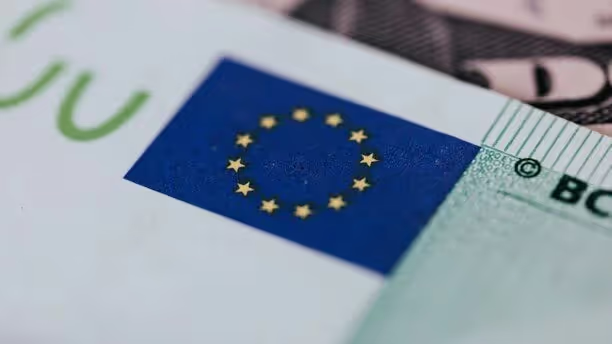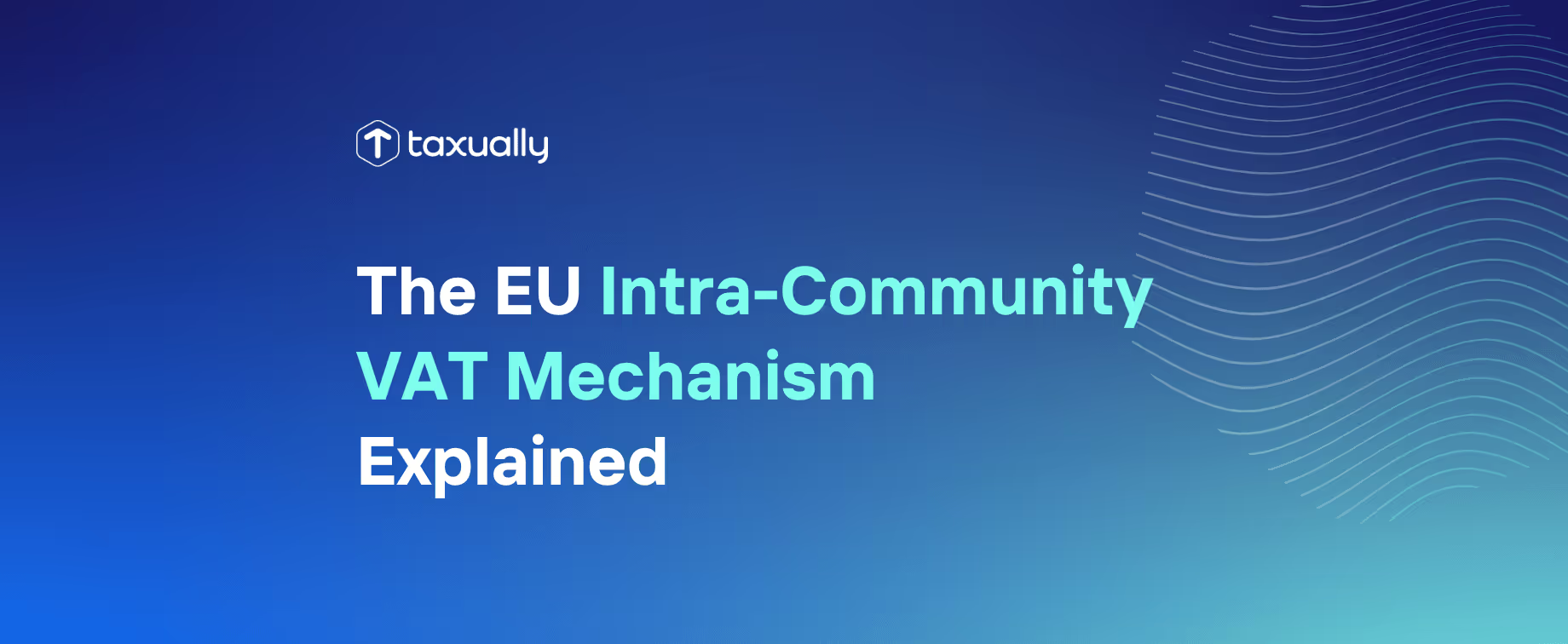Key takeaways
- The EU intra-community VAT mechanism streamlines cross-border trade by harmonizing VAT rules and eliminating double taxation within the EU.
- Businesses can benefit from zero-rated supplies, improved cash flow, and fairer competition when meeting the system’s compliance requirements.
- Effective compliance requires valid VAT registration, accurate record-keeping, timely VAT returns, and use of technology or expert advice to reduce administrative burdens.
Navigating the complexities of cross-border trade can be a daunting task, especially with regard to VAT regulations. That’s where the European Union's intra-community VAT mechanism comes into play. It streamlines the VAT process, ensuring smooth cross-border trade within the 27 EU Member States. So, let’s take a closer look at the crucial role EU intra-community VAT plays in simplifying and harmonizing cross-border transactions, and why it matters for businesses operating in the European market.
The importance of streamlining cross-border transactions
Cross-border transactions are becoming increasingly vital for businesses of all sizes. With the expansion of global markets and the rise of ecommerce, companies are no longer limited by geographical boundaries. However, conducting business across borders comes with its fair share of challenges. One of the most significant hurdles is navigating the complex web of tax regulations, particularly VAT. But it's not just non-EU trade with the EU that can be tricky. VAT can differ significantly from one EU country to another, making cross-border trade a logistical nightmare.
To address this issue, the EU introduced the intra-community VAT mechanism, which aims to simplify and harmonize VAT regulations within the 27 EU Member States. The EU VAT Directive's goal is to create a level playing field for businesses and promote seamless trade within the European market. By streamlining cross-border transactions, the EU intra-community VAT mechanism eliminates many of the hurdles businesses face when conducting business across EU borders.
What is EU intra-community VAT?
The EU intra-community VAT mechanism is designed to facilitate the movement of goods and services between EU Member States. It allows businesses to trade with each other without incurring additional VAT costs. This is known as intra-community supplies, which refers to the movement of goods or services between EU Member States and where VAT is accounted for in the destination country rather than the country of origin.
To qualify for intra-community supplies, businesses must meet the following criteria:
- Both the supplier and the customer must have a valid VAT number and be registered on VIES (VAT Information Exchange System).
- The goods or services being supplied must be intended for business purposes.
- The goods must physically move from one EU Member State to another.
By meeting these requirements, businesses can benefit from the simplified VAT procedures and avoid unnecessary costs and administrative burdens.
What are the benefits of EU intra-community VAT?

The EU intra-community VAT mechanism offers several benefits for businesses engaged in cross-border trade within the EU. One of the key advantages is the elimination of double taxation. Under the intra-community VAT system, businesses can zero-rate their supplies, meaning they do not charge VAT to their customers in another Member State. This eliminates the need for companies to navigate complex VAT rules in multiple countries, reducing administrative burdens and simplifying operations.
Another benefit of the EU intra-community VAT system is improved cash flow. When businesses engage in cross-border transactions, they often face delays in VAT refunds, which can tie up valuable resources. However, under the intra-community VAT system, businesses can apply for VAT refunds directly in the Member State where they’re registered. This ensures quicker and more efficient processing of VAT refunds, allowing businesses to maintain a healthy cash flow.
Additionally, the EU intra-community VAT mechanism promotes fair competition among businesses within the EU. By harmonizing VAT regulations, it levels the playing field for businesses of all sizes, preventing unfair advantages for companies located in low-tax jurisdictions. This creates a more balanced and competitive market environment, benefiting businesses and consumers alike.
Are there any disadvantages to intra-community VAT?
While there are numerous advantages to the EU intra-community VAT system, businesses may still encounter challenges when navigating its complexities. A key one is ensuring compliance with VAT regulations in different Member States. Each country within the EU will have its own specific rules and requirements, making it crucial for businesses to stay up-to-date with the latest regulations.
Another challenge is managing the administrative burden associated with VAT compliance. Businesses engaged in cross-border trade may be required to maintain detailed records of their intra-community activities, including invoices, transport documents, and proof of delivery. Failing to document these transactions properly can result in penalties and additional costs.
Also, VAT rates can vary significantly across EU Member States, making it difficult for businesses to accurately calculate VAT liabilities. This can lead to errors and potential disputes with tax authorities. To overcome these difficulties, businesses should invest in robust accounting systems and obtain specialist tax assistance to ensure compliance with VAT regulations.
How do I comply with EU intra-community VAT regulations?

There are a number of requirements businesses must meet to ensure they remain compliant with EU VAT laws. Here are some essential steps businesses should take to ensure compliance:
1. Register for VAT
Before engaging in cross-border transactions within the EU, businesses must register for VAT in their home country and any other member state where they have a fixed establishment or conduct significant business activities.
2. Obtain a valid VAT number
Once registered for VAT, businesses will be issued a unique VAT number. This number must be included on all invoices and other relevant documents related to intra-community supplies.
3. Maintain proper records
Businesses must keep accurate records of their intra-community supplies, including invoices, transport documents, and proof of delivery. These records should be readily available for tax audits and inspections.
4. Submit VAT returns
Regular VAT returns must be submitted to the tax authorities in each Member State where businesses are registered for VAT. These returns should accurately reflect the intra-community supplies made and received during the reporting period.
5. Stay informed
VAT regulations and rates may change over time. It’s essential businesses stay up-to-date on the latest developments and seek professional advice when necessary.
How can I optimize intra-community VAT compliance?
In the digital age, businesses have access to a wide range of tools and technologies that can help streamline cross-border transactions and VAT obligations, allowing them to focus on expanding their cross-border operations. Here are some examples:
Automated VAT software
Specialized VAT software can simplify the process of calculating VAT liabilities, managing invoices, and generating VAT reports. These tools can save time and reduce the risk of errors.
Ecommerce platforms
Many ecommerce platforms offer built-in VAT compliance features, allowing businesses to automatically calculate and collect VAT on cross-border sales. These platforms can also generate VAT invoices and handle VAT reporting.
Cloud-based accounting systems
Cloud-based accounting systems provide businesses with real-time access to their financial data, making it easier to track and manage intra-community trading. These systems can also integrate with other tools, such as VAT software, to streamline operations.
Consultancy services
Working with VAT consultants or tax advisors can provide businesses with expert guidance on compliance and help navigate the complexities of cross-border transactions. These professionals can ensure businesses stay up-to-date with the latest regulations and make informed decisions.
Conclusion
Looking ahead, the future of EU intra-community VAT and cross-border transactions is likely to involve further digitalization and harmonization efforts. The EU is already taking steps to modernize VAT rules and adapt them to the digital economy. This includes initiatives such as the One-Stop Shop (OSS) and the Import One-Stop Shop (IOSS), which aim to simplify VAT compliance for businesses engaged in ecommerce and distance selling.
By staying informed, embracing technological advancements, and collaborating with experts, businesses will be better positioned to navigate the evolving landscape of cross-border transactions and ensure their operations remain efficient and compliant. With the EU intra-community VAT system as a guiding framework, businesses can unlock new opportunities in the European market and thrive in an increasingly interconnected world.
Do you need help with your VAT compliance? Book a free call with one of our VAT experts to find bespoke solutions for your business, optimize your VAT costs, and reach millions of new potential customers.
Frequently asked questions
New Year's Day - 1/1/2024Memorial Day - 5/27/20244th of July - 7/4/2024Labor Day - 9/2/2024Thanksgiving Day - 11/28/2024Day after Thanksgiving - 11/29/2024Christmas Eve - 12/24/2024Christmas Day - 12/25/2024
What is the EU intra-community VAT mechanism?
It’s a system that simplifies VAT for cross-border trade within the EU by allowing businesses to zero-rate qualifying supplies and account for VAT in the destination country.
Who can use intra-community VAT rules?
Businesses trading goods or services between EU Member States, where both supplier and customer have valid VAT numbers and the goods move physically across borders.
What are the main benefits for businesses?
Elimination of double taxation, improved cash flow from faster VAT refunds, and a level playing field through harmonized VAT rules.
Are there any challenges with intra-community VAT?
Yes. Businesses must navigate varying national rules, maintain detailed transaction records, and ensure accurate VAT calculations to avoid penalties.
How can I stay compliant?
Register for VAT where required, keep accurate records, submit timely VAT returns, and stay updated on changing VAT rules—ideally with the help of VAT software or expert advice.



















